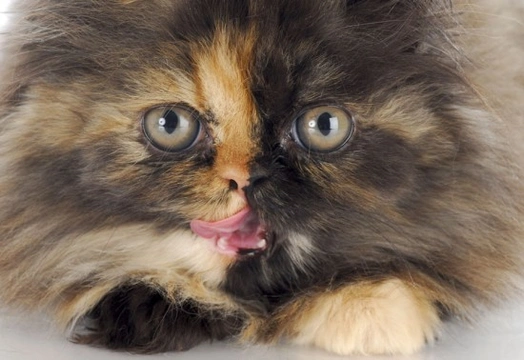Pets
Pets for studWanted petsBreedersAccessories & services
Knowledge hub
Support
Support & safety portal
Tortoiseshell Cats
Tortoiseshell describes a pattern, rather than a breed of cat, and is a mottled effect created by a mix of one of the darker coat colours such as black, blue, lilac, chocolate, cinnamon or caramel, mingled with red, cream or apricot, but not white. A cat that is predominantly white in colour, but with tortoiseshell patches, is normally described as being a tortoiseshell-and-white, although this is called a Calico in the USA and Canada. It's possible to find a coat pattern that is both tortoiseshell and tabby - in the USA this pattern is known as 'torbie' whereas here in Britain they are known as tortie-tabbies. As well as often being seen in non-pedigree cats, there are also many breeds of pedigree cat having tortoiseshell markings including those varieties with colour on their 'points' (face, ears, tail and legs) such as Siamese and the longhaired and shorthaired Colourpoint breeds, as well as in the 'self-coloured' breeds with the same coat pattern all over, such as Burmese or Orientals - these pedigree breeds are often referred to as a 'tortie'.Tortoiseshell coat patterns are the result of an interaction between genetic and developmental factors. Male cats have one X chromosome and one Y chromosome, in exactly the same way that humans do, and correspondingly, females also have two X chromosomes. The 'O'(for 'orange') gene that produces colours in the feline 'red series' (red, cream, apricot, together with 'ginger' in non-pedigree varieties) is found in the X chromosome and changes black pigment into red pigment. If a male cat has the red gene, then he will be one of the red series in colour. The red colour is a little more complex in female cats, which may have one or two red genes, or none at all. If it has one red gene, then it is a tortoiseshell, two and it's a red (or cream or apricot), and if there are none, it will be a different colour altogether. Red female cats aren't as rare as tortie males, although there are far fewer red female cats than there are males because of the female requiring two red genes for the colour. During the development phase of female cat embryos, one of the X chromosomes is randomly 'de-activated' in the cell, which is what causes the tortie patches, as two full red gene are required to produce a 'ginger' cat. Tortoiseshells are nearly always female, the reason for this being linked to the sex-related genetics. However, a male tortie will occasionally appear in a litter, and although these are usually sterile and not able to father kittens, there are exceptions to every rule, and very rarely, a fertile male tortie will appear. Male torties always pose a slight problem for a breeder as they are a genetic abnormality, and as such, the Governing Council of the Cat Fancy (GCCF) will not register them as being tortie. Instead, the breeder has to register them as being the main base colour of black, blue, caramel etc, despite the very obvious tortie markings. About twenty years ago there was a very famous seal tortie point male Siamese, who was fertile, although he bred as if he was a seal point. At that time the GCCF hadn't made their ruling about the registration of torties, and cat shows had to create a special class for him so that he did not compete against the females, and he became the only male tortie point Siamese Champion! To breed tortie cats of any variety, at least one parent must carry the 'O' gene, although if both parents are red in appearance, they will produce only red offspring. To stand a chance of producing tortie kittens, it is necessary to mate a red female with a non-red male, a non-red female with a red male, or a tortie female with either red or non-red male - although it would still be possible to end up with a litter containing no torties whatsoever! One of the most attractive things about tortoiseshell cats is that no two are ever the same in appearance as the markings are totally random, whatever the breed. Quite often there will be a solid line down the length of the face and one side of the line will be the darker colour, and the other side the paler one - and sometimes (especially in tortie point Siamese) there will be a pale blaze down the front of the face.Tortoiseshell cats are sometimes thought to bring good luck for certain cultures - in the USA they are sometimes referred to as 'money cats', and the 'Maneki Neko' cat figurine of Japan (with a paw lifted in greeting) is usually depicted as a tortoiseshell- and-white variety. Many owners of tortoiseshell cats (whatever the breed) believe that this colour combination has a distinctive personality, and that 'naughty torties' are very strong-willed, independent and particularly possessive of their owners!



